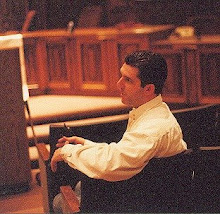Bonds and Footie
Bond markets reacted very negatively to the inflation data this morning, despite the fact that only one of the four numbers was above expectations, it is generally conceded that now the Fed will have to raise rates for the 18th consecutive time at its next meeting in late June. That’s bad for bonds, which sold off, though this time stocks actually saw this as a good thing (market uncertainty is very bad for stocks) and rallied. That put the Dow back in positive territory for the year.
What does this mean for mortgage rates? Well, it’s interesting. Week before last when the employment data came in negative, bonds rallied strongly, and that ordinarily means hat mortgage rates dive. But they didn’t. There was no move whatever in the bond runup. So today, when bonds crashed back to where they were before, what happened? Nothing. My rate sheets today look exactly the same as they did yesterday. I got no reprice notices at all during the day. Now, tomorrow, things might change, and the bond move might be priced in, pushing the 30-year back up to 6.625%. But I wonder. I’ll post when we see what’s occurred.
On to football/soccer.
I read an article at TheSportsEconomist discussing the recent performance of the US national team at the World Cup. Most of you know I am a great enthusiast of the sport, and was very disappointed by the US performance against Czech Republic. The article contends that this is a systemic problem – the US team has no players that can create in packed space - and that those teams that play the way the Czechs do (and the Italians do, for that matter, looking ahead to Saturday) will beat the US pretty much at will. This could explain why the US has NEVER won a match on European soil. The Chris Jones Group is saddened, but not surprised.
So why do we not have such players? Well, I have a theory.
For a number of years, I've had a nagging suspicion that the way the US develops its players has a great deal to do with what we get from said development - namely, that at a very young age we put tiny little players on very large fields with adult-sized goals. What we get from this is very fast players who are good on counterattack and in the air, and the world's largest supply of top-flight goalkeepers. What we do not get is quality distribution of the ball in midfield or creativity in tight spaces, and we do not get quality finishing with either foot from our strikers. That, it seems to me, pretty much exactly describes this incarnation of the US national side.
In South America particularly, but in Europe and increasingly in Africa, the fields and goals are very much smaller for very much longer. This is especially true of the playgrounds where most of the youth spend their pickup time. The average European playground is no larger than half a basketball floor and the goal size resembles the back of a park bench (and frequently IS the back of a park bench). What you get from this is Brazil and Argentina, France and Germany. You get Beckenbauer and Zidane and Ronaldinho.
It's a theory. I'm far from expert in such matters. But it appears to me to be an explanation for the continuing state of US football vis-a-vis the rest of the planet.
The next serious football threat to South America, incidentally, seems to me to be coming from Africa, not Europe. Their wide-open, high-work-rate, offensive-minded game is very fun to watch and increasingly competitive on the world stage.
That said, the Saudi Arabia/Tunisia match was the best so far for drama and passion, and there might never have been a better footballing atmosphere anywhere on earth than what we saw in the Germany/Poland match. Absolutely crackling.


<< Home